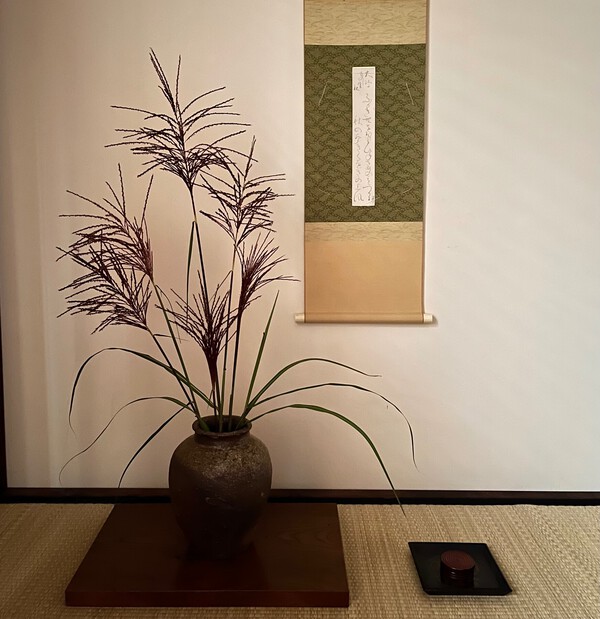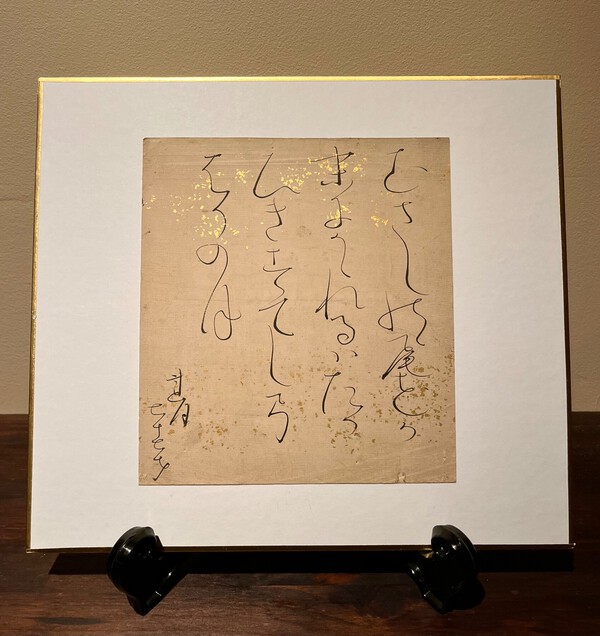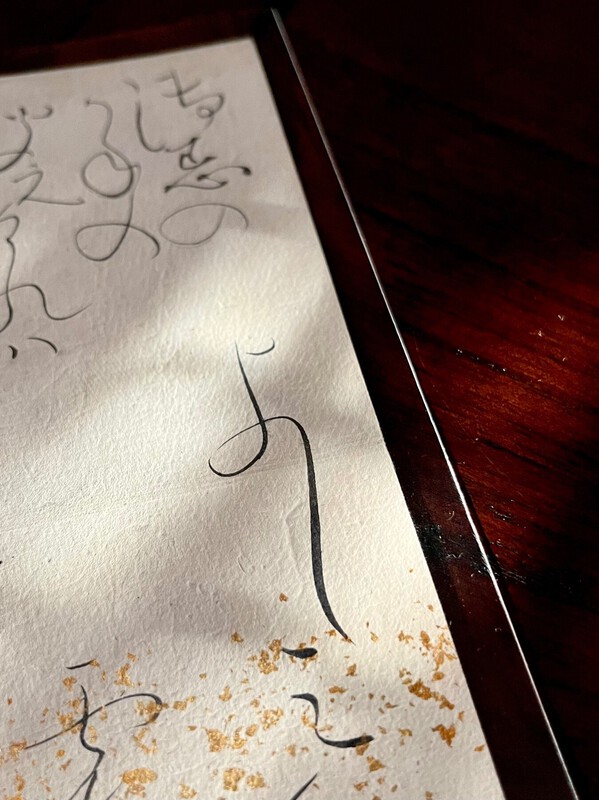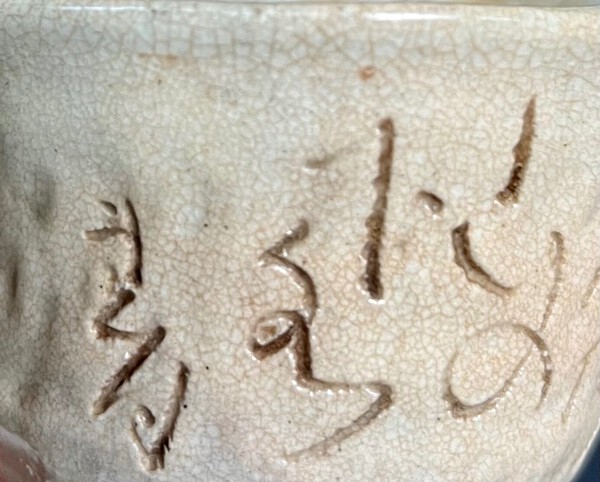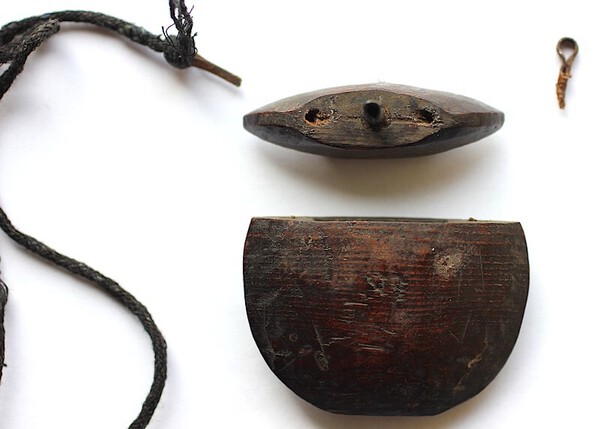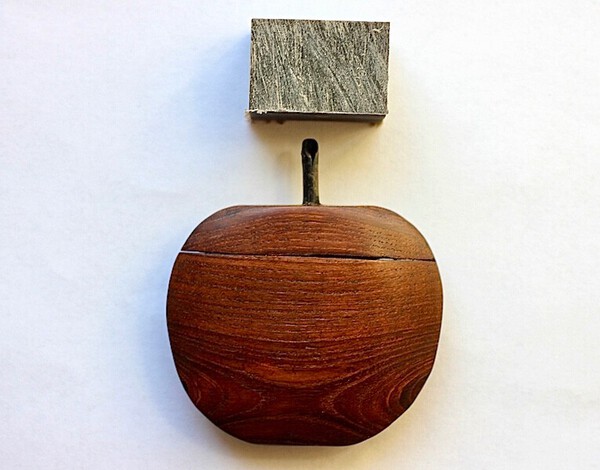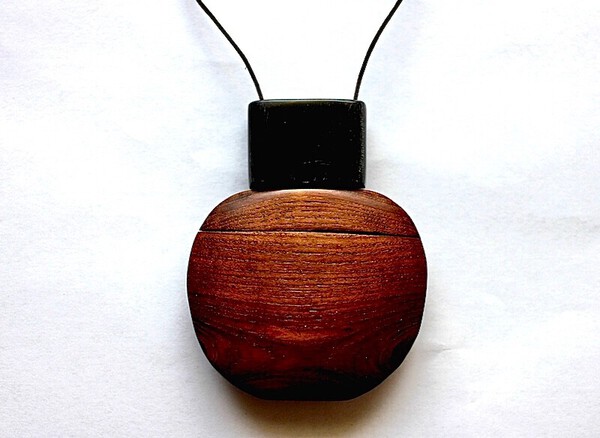-
Posts
534 -
Joined
-
Last visited
-
Days Won
2
Content Type
Profiles
Forums
Events
Store
Downloads
Gallery
Everything posted by Viper6924
-
You managed to pull together a nice display for that event. Well done Jan
-
There are indeed many works where the artist added a signature/seal, but the vaste majority of these were made by famous/semi famous artist. The pine is an evergreen, so it’s not poetically connected to any season. If you combine it with plum and bamboo, well then it’s connected to winter. But on its own, as in this poem, it’s non-seasonal. Jan
-
We know that Rengetsu helped many budding artist to sell their art by adding one of her poems to them. That way they could bring in some well-needed funds. I think that explain why we see so many illustrated waka by Rengetsu with the artwork itself left unsigned. We see this in all sort of arts from Japan. An artist in training wouldn’t sign their work in respect of their teachers or more accomplished artists. I think your scroll is such a cooperation. I have several in my collection. Jan
-
Loving these candle holders 🙂 Jan
-
It’s mainly to do with the style of her signature. Having a long and VERY productive life, her style varied quite a lot. But there are features to look for. The way she draws the pine needles etc are typical of her. To be honest, her ability as an artist, when it came to drawings, were limited. Usually I can nail an original Rengetsu drawing in seconds 🙂 Jan
-
It’s indeed one of her most well-known waka. This one is very easy to relate to even for people not used to enjoy poetry. For reference let me share the same poem executed in a slightly different style 🙂 This is a large shikishi and it shows how the old lady never wasted anything. This is from her early years. Work from this period is quite rare. First it got an illustration made by Rengetsu herself. A huge bonus. But what makes it truely unique is that she clearly ran out of space. But instead of putting it in the fire, she just added the last line of the poem to the bottom of this shikishi. Apparently a good move as this piece of art survived until the 21th century 🙂 Jan
-
The picture of the traced calligraphy comes from the sencha mug I posted earlier. The tanzaku is currently stored away but will be displayed in the early spring. The moon-viewing festival or tsukimi in Japanese will be held at the 6th of october this year. As with all artifacts, antique or modern, if they have a seasonal motif, they should be displayed at the correct time of year. So let me give you an example of how I use the old lady from Kyoto at this time of year. In the tokonoma I have arranged some beautiful pampas grass which is closely connected to the moon festival. On the wall is displayed a rather dramatic tanzaku that reads: ”Reflecting on ancient times and burial mounds for ears I hear the voice of autumn the wind over the rushes”. The burial mounds of ears is of course connected to the gruesome habit of collecting ears during the Korean invasion. Rengetsu is contemplating the folly of men whilst the autumn winds reminds her of the changing of the seasons. I connect the autumn winds in the rushes with the grass displayed in the old Tokoname tsubo. In another part of the room I display a shikishi with a poem directly connected to the autumn moon and tall grasses. It reads: ”On Musashi Plain hanging behind the tips of pampas Who cast up this bow the crescent moon”. I don’t place this poem near the flower (grass) arrangment as it would be ”too obvious”. You need to let the mind do some thinking once in awhile. Well, that’s how I sometimes use the art by Otagaki Rengetsu. Jan
-
Here is the two faces of Rengetsu’s style of calligraphy. One brushed on paper and one traced in clay. If you look at a detailed part of a recent acquired tanzaku, you can see the beauty of her calligraphy. I don’t think I stick out my neck to far when I say that she had one of the very best hands when it comes to calligraphy in Japanese history. Powerful yet elegant. She moved the brush with the lightest of touch, at the same time she had the power to trace poems into semi-dried pottery. Not many, if any can match that. Jan
-

New-to-me - interesting, but what is it?
Viper6924 replied to Flint62Smoothie's topic in Tanegashima / Teppo / Hinawajū
Let me jump in a tad late in your discussion Looking at my own humble collection, guns without a trigger guard are usually small-caliber and they were most likely for target practise. If they have a trigger guard, but still small caliber, they tend to be used for hunting, even if they of course could be used for both. My own theory is that a trigger guard is more useful whilst out in the bush looking for game. You miss a step at least the guard protects you somewhat from touching the trigger causing a misfire. My five cents 🙂 Jan -
The decorations on these tanzaku were always made before the artist brushed the poem. On these ones the manufacturer first used blue paint and drew this wavy design. He then scattered flakes of mica or gold leaf as an extra decoration. It’s fun to see how the artist sometimes matched the content of the poem with the decoration of the tanzaku. There are two major types of tanzaku; the white ones which might include some scattered gold or they might be completely plain and then you have the decorated one. The latter was of course much more expensive. We know that Rengetsu bought hers from a dealer in Kyoto. But she of course also was gifted many of these tanzaku from friends and customers. She must have gone through hundreds per month. Jan
-
Nothing better than a well-prepared cup of gyokuro. But you really need to know what you are doing. Most people don’t understand how much tea you use in comparison to the amount of water. It’s just crazy to be honest We touched upon the nun’s production. She was very prolific, to say the least. Especially between 75-85. I have an interesting exemple of this. Here’s three tanzaku. They are of the absolute highest quality. They carry three different poems (spring, autumn and winter themed). They are all dated to her 79th year. She got these three (at least) tanzaku in one delivery and most likely in a burst of inspiration, brushed poems on them in one sitting. We of course don’t know when in the year she got them, but I find it interesting that she brushed poems from three different seasons. Having a catalogue of over 1000 poems to go from, I guess she brushed whatever came to mind, despite the season. Jan
-
This is from yesterday when I brewed some gyokuro for myself and my girlfriend. In this case I use smaller cups meant for top-quality sencha or gyokuro. Notice on the right cup the bamboo motif inprinted into the clay. This is the smallest sencha cup I’ve encountered so far made by Rengetsu. If you look carefully you can also see she dated it to her 82nd year. Jan
-
I have a friend who’s wife forbids him to buy her brushed poetry without an illustration. As she can’t read Rengetsu’s poetry (who can 🙂) she feels an illustration brings home the message. I have both kind as I feel Rengetsu’s calligraphy is art in itself. Personally I think some of her best brushed work was made in her late 70s. Talking about using her work, here’s a large sencha cup I pretty much use every day. It got all the traits I’m looking for. You can easily spot her fingerprints and even nail marks in the bottom. Jan
-
I guess by chance, can’t really explain it any other way, the old lady from Kyoto came into my life some years ago. I saw a set of sencha cups that were covered in calligraphy. But what really got me hooked, was the overall humble apperance of her pottery and the fact that you could see and feel her fingerprints in the clay. So I first discovered her pottery. After that I found some tanzaku (poetry slips) with her calligraphy. I had never encountered calligraphy that light and full of life, and that’s to say a lot as one of my friends is a calligraphy sensei from Japan. By then I’ve also entered into the world of her poetry. And trust me here, poetry was not something I was very much interested in before Rengetsu entered my life. These days I enjoy the width of topics dealt with in her poems. During my journey I’ve been very fortunate to become friends with some of the foremost experts of Rengetsu in Japan and in Europe. They have thought me so much about her life and art(s). Here is also a good place to offer a stern warning. There are so many fakes, or tributes if you want to use a nicer wording, attributed to Rengetsu. We usually say that out of ten objects, nine are no good. There are also genuine artwork by Rengetsu that can be very tricky to sort out from the rest. She was after all human and as such she had good days as well as bad. I’ve been able to get hold of some nice pieces over the years. I treat them with the respect they deserve and I also use them on a regular basis. Because if I know one thing about the old lady, it is that she would not appreciate seing her work collecting dust on a shelf. These were everyday objects meant to be used. Yes, they are expensive, but treat them with respect and be careful and they will offer you countless happiness for years to come. Have included a summer chawan which I love to use during the warmer months. Jan
-
Piers is of course correct. This is a Yonezawa zutsu with all the bells and whistles. To be honest I don’t think I’ve ever seen a Yonezawa in better condition. Would love to see a closeup of the pan. A signature would tell us which smith it was that made it. There’s a handfull to chose from that was active during the first half of the 1800s when this iconic matchlock was made. Jan
-
Love the sakura byo. Don’t think I’ve seen that before 🙂 Does it come with a signature? Jan
-
I read somewhere that the Shimazu clan would permit some potters the honor of using the ”cross-in-a-circle” kamon. That would give the piece somewhat of a connection with the famous samurai clan. These ”licensed” pieces of pottery always carries the kamon in gosu blue, which is dark blue, green or black depending on the firing. Jan
-
You found some nice items lately, Piers. You always had a good eye 🙂 Love the small Naminohira tanto. Classic red Satsuma color. A matchlock and a tanto from Satsuma; Mr O would have loved em’ 😉 Well done my friend! Jan
-
I’m reading this 😂😂😂 We are about 240-250 A4 pages into this book project. It’s a massive project that needs to be done as the misinformation about Japanese matchlocks is quite scary. Beside the editing part I think we need to write about 30-40 pages more in order to cover our bases. So hopefully by the end of this year. Jan
-
Your latest project looks very nice, Piers. Nice balance between the different parts. It brings harmony to the whole piece 🙂 Jan
-
Love your renovation of the flask. Before you could find genuine Edo-period flasks quite readily. These days it’s mostly ugly fakes. I’ve also renovated some flask and it’s bloody hard work. Drilling all those holes are a nightmare. One time I had to start from scratch three times due to the fact that the holes didn’t line up. Here’s a flask I rescued a couple of years ago. Cost me JPY1000. The cap was missing as well as the spout which was replaced by an iron pipe that was glued in place. The wooden flask was in an overall terrible state with a lot of damages on the wood. It was only after I cleaned up the flask and discovered the nice wood grain that I realised why the original flask-maker chose this piece of wood to work with. The most rewarding thing is when you let go of the flask and the cap falls in place with a nice snap Jan
-
The Enamiya line is very well-known and I’ve seen many matchlocks made by several generation gunsmiths. I have what we would label as a classic ”Sakai matchlock” with a signature beginning with Enami, which I think was part of the same line. Do you have some pictures of the matchlock? Jan
-
A lot of info to process, Arthur New input on old ”ideas” are always welcome. When it comes to history, be it Japanese or other, we can’t afford to stop investigating. Otherwise stagnation sets in. Looking back at books written 10-15 years ago, reveals that the process of gaining new ground, indeed moves in the right direction. Albeit slow at times… When we comes to the topic about what is of Japanese true origin, the one important thing that comes to mind is Shinto. Apart from that, I like to think of the Japanese as the unrivaled masters at incorporating forriegn ideas. They tried and tested everything coming in from the mainland. Bad ideas not in par with the Japanese mindset, was discarded quicker than you can say sayonara. But if the ”import” took root in the heart of the locals, with locals I of course mean the top 1-2% of the community, assimilation and more importantly, development followed. We see this local improvement everywhere in Japanese culture. This is fact plain and simple. Of course this also had an huge impact on the development of Japanese arms and armor development. Everything from the curve of a blade, horsemanship and general development of arms and armor came from abroad. But it was in many areas developed by the skillful Japanese artisans into something better and much more effective. I have a 10 monme Kishu matchlock made in 1863. It’s the absolute pinnacle of perfection when it comes to matchlocks. Compare it to the western version would be like comparing a rusty bike to a Ferrari It’s of course another question if this stubborn attachment to matchlocks was a sound policy, whilst the west was producing Winchester repeating rifles during the same period. Nothing creates develpment like war. Nothing! Look at Ukraine. The locals brought in forreign technology in the form of harmless drones, which you can pick up in any tech-store for a few hundred dollars to spy on your neighbours and changed them into ”messangers of death” for the invaders. Just like the Japanese been doing for over a thousand years. I will keep following this and other threads like it with great interest, as there are nuggets of gold within that will carry history forward. So keep at it, Arthur 😉 Jan
-

Information on a bizen yaki/pottery bowl
Viper6924 replied to BjornLundin's topic in Other Japanese Arts
Hi Björn! There are no pictures. Can you try to resending them again. Jan -
You never know until you try it 🙂 I actually checked the matchlocks in my collection. Out of the 12, 6 had only plain holes for the mekugi. These 6 guns comes from all over Japan, so there’s no regional preference for one or the other. Jan







